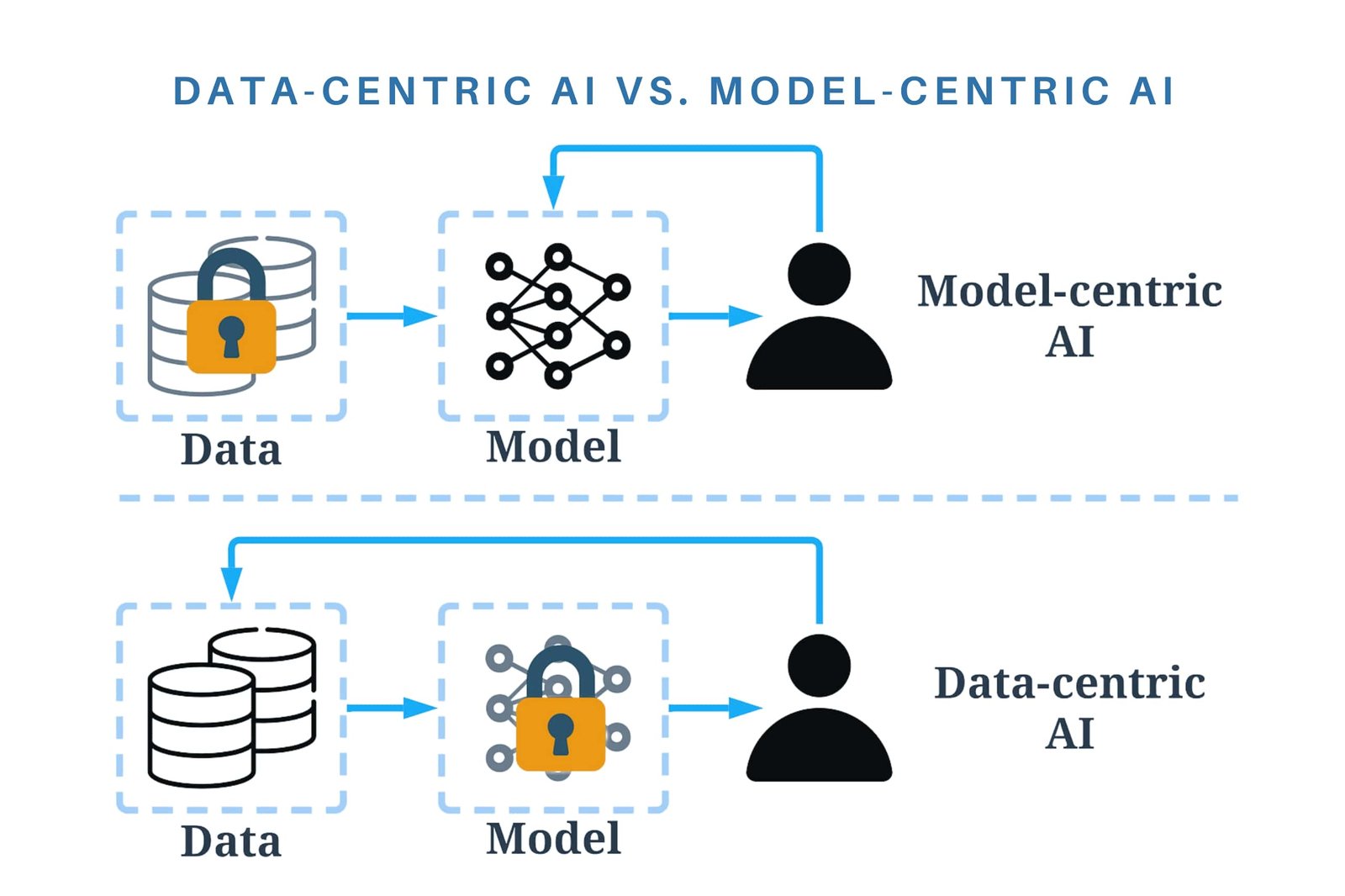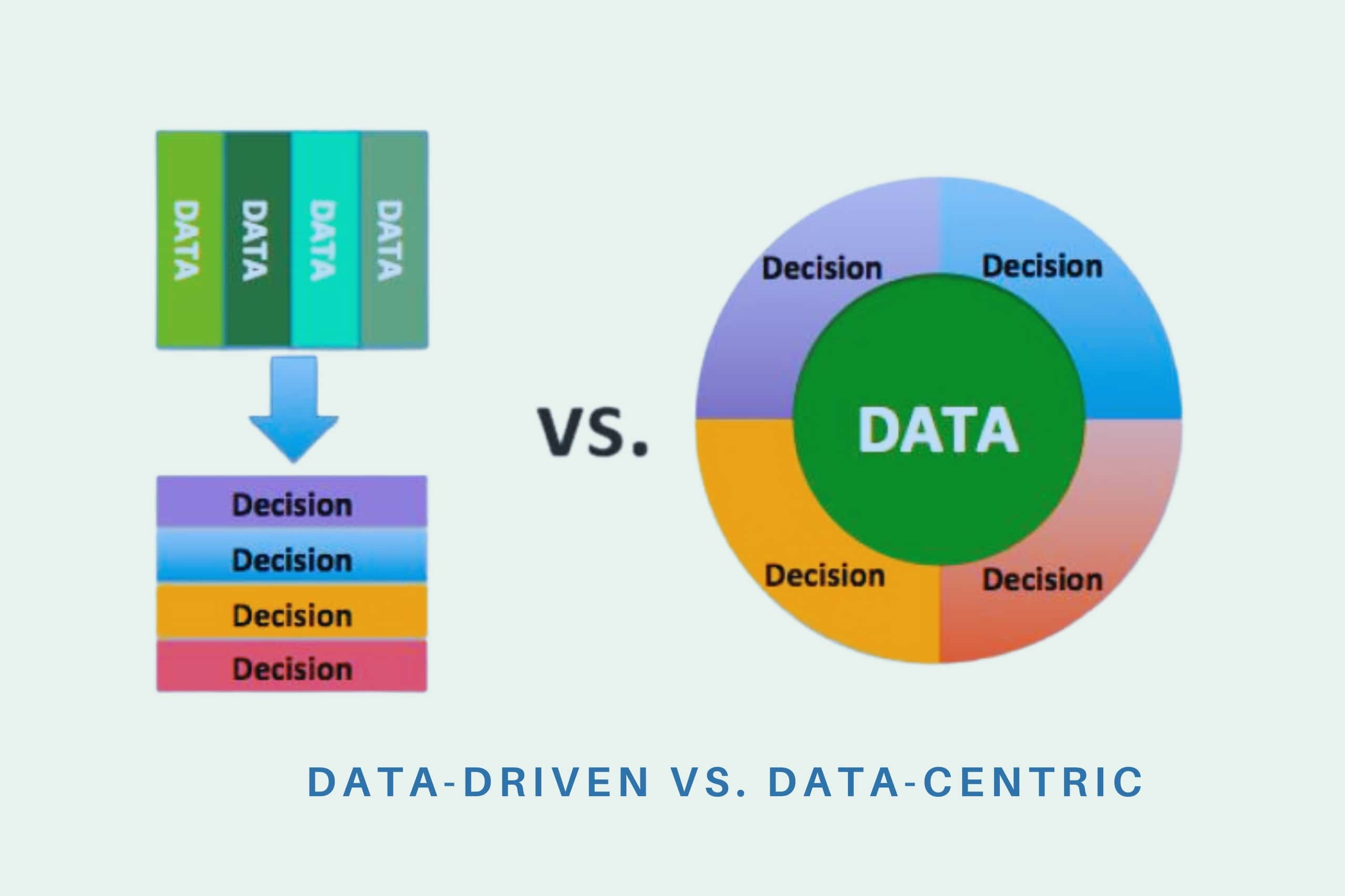In the world of artificial intelligence (AI), data plays a crucial role. It is the lifeblood that fuels AI algorithms and enables machines to learn and make intelligent decisions. And to effectively harness the power of data, organizations are adopting data-centric architectures in AI. But what exactly is data-centric architecture in AI? In this article, we will delve deep into this topic, exploring its significance, benefits, and implementation strategies. So, let’s get started!
The Importance of Data-Centric Architecture:
Data-centric architecture is an approach that places data at the core of AI systems. At the same time, it emphasizes the collection, storage, and processing of high-quality data to drive accurate and reliable AI models. Thus, by adopting a data-centric approach, organizations can unlock the true potential of their data and gain valuable insights that lead to informed decision-making.
How Does Data-Centric AI Work?
Now that you have an understanding of Data-centric architecture, it is also pivotal to understand how Data-centric AI works. The following section highlights the key steps of functioning of Data-centric architecture.
- Data Collection:
The process begins with the collection of relevant and diverse data from various sources. This can include structured data (e.g., databases, spreadsheets) as well as unstructured data (e.g., text, images, videos).
- Data Preparation:
Once collected, the data needs to be preprocessed and prepared for analysis. This involves cleaning the data, removing noise and inconsistencies, handling missing values, and transforming it into a suitable format for AI algorithms.
- Data Annotation:
In many AI applications, data annotation is necessary to label or tag the data with relevant information. For example, in image recognition tasks, each image may need to be labelled with the objects it contains. Data annotation can be done manually or using automated techniques.
- Training Data Selection:
A critical aspect of data-centric AI is selecting the right subset of data for training the AI models. This involves choosing representative data that covers the desired range of inputs and targets, avoiding biases, and ensuring the data is diverse and balanced.
- Model Training:
Once the training data is prepared, it is used to train AI models using various Machine Learning techniques. These models learn from the patterns and relationships present in the data to make predictions, classify objects, or perform other desired tasks.
- Continuous Learning and Iteration:
Data-centric AI systems often incorporate mechanisms for continuous learning and adaptation. As new data becomes available, the models can be retrained or fine-tuned to improve their performance over time.
- Data Governance and Ethics:
Given the critical role of data, data-centric AI emphasizes the need for robust data governance practices. This includes ensuring data privacy, security, and compliance with ethical guidelines to avoid biases, discrimination, or misuse of data.
- Monitoring and Evaluation:
Data-centric AI systems require continuous monitoring and evaluation to assess their performance and identify potential issues. This involves analyzing metrics, feedback from users, and validating the accuracy and reliability of the AI models.
By prioritizing data quality, diversity, and accessibility, data-centric AI aims to enhance the accuracy, reliability, and fairness of AI systems, enabling them to make better-informed decisions and provide valuable insights across various domains.
Read Blog: Top 7 Generative AI Use Cases and Application
Data-Centric AI vs. Model-Centric AI- tabular representation:
Tabular representation comparing data-centric AI and model-centric AI:
| Aspect | Data-Centric AI | Model-Centric AI |
| Focus | Primarily emphasizes on the quality and quantity of data. | Primarily emphasizes on the design and architecture of models. |
| Data Importance | Data is considered the primary driver of AI system performance. | Models are considered the primary driver of AI system performance. |
| Data Collection | Collects diverse and relevant data from various sources. | Collects data that aligns with the model architecture and objectives. |
| Data Preparation | Cleans, preprocesses, and transforms data for analysis. | Prepares data for model input according to the model’s requirements. |
| Model Training | Trains models using the collected and annotated data. | Trains models using the prepared data to optimize model performance. |
| Continuous Learning | Incorporates mechanisms for continuous learning and adaptation based on new data. | Focuses on refining and updating the model architecture and parameters. |
| Monitoring and Evaluation | Evaluates the performance of AI systems based on data quality and reliability. | Evaluates the performance of AI systems based on model accuracy and performance metrics. |
| Governance | Emphasizes data governance, privacy, and ethics. | Emphasizes model architecture, interpretability, and ethical use. |
In summary, while data-centric AI prioritizes the quality, diversity, and accessibility of data, model-centric AI focuses more on the design, architecture, and optimization of AI models. Both approaches are important and can be complementary in building robust and effective AI systems.
Benefits of Data-Centric AI Architecture:
Data-centric AI architecture offers several benefits that contribute to the effectiveness and performance of AI systems. Here are some key advantages:
- Improved Accuracy
By emphasizing the quality and quantity of data, data-centric AI architecture enhances the accuracy of AI models. High-quality data enables better pattern recognition and understanding, leading to more precise predictions and decisions.
- Enhanced Robustness
Data-centric AI systems are designed to handle diverse and representative data, making them more resilient to variations and outliers. Robust models trained on comprehensive data can handle real-world scenarios more effectively and reduce the risk of unexpected failures.
- Reduced Bias
Data-centric AI architecture aims to mitigate bias by ensuring diverse and balanced training data. Incorporating a variety of perspectives and avoiding skewed datasets, it helps create fair and unbiased models that provide equitable outcomes.
- Adaptability and Continuous Learning
Data-centric AI systems are designed for continuous learning and adaptation. As new data becomes available, the models can be retrained or fine-tuned, allowing them to improve and stay up to date with evolving trends and patterns.
- Increased Insights and Interpretability
Data-centric AI architecture enables the extraction of valuable insights from the data. By analyzing and understanding the underlying patterns, it provides explanations and interpretations of AI system decisions, enhancing transparency and trustworthiness.
- Better Decision-Making
With a focus on data quality, data-centric AI architecture enhances the decision-making process. By leveraging comprehensive and accurate data, it provides more informed and evidence-based decisions, leading to improved outcomes across various domains.
- Ethical and Responsible AI
Data-centric AI architecture promotes ethical practices and responsible AI development. It emphasizes data governance, privacy, and compliance with ethical guidelines, ensuring that AI systems are used in a manner that respects user rights and societal values.
- Scalability and Generalizability
By collecting and utilizing large-scale and diverse datasets, data-centric AI architecture enables scalability and generalizability. Models trained on extensive data can handle a wide range of inputs and generalize well to unseen data, making them more applicable in real-world scenarios.
FAQ
What are the benefits of adopting a data-centric architecture in AI?
By adopting a data-centric architecture in AI, organizations can:
- Leverage the full potential of their data assets
- Improve the accuracy and reliability of AI models
- Make informed decisions based on data-driven insights
- Enhance the scalability and flexibility of their AI systems
How does data-centric architecture differ from traditional AI approaches?
Traditional AI approaches often focus on algorithm design and assume the availability of clean and curated datasets. In contrast, data-centric architecture emphasizes the importance of data quality, preprocessing, and feature engineering. It recognizes that the success of AI models heavily depends on the quality and diversity of the underlying data.
What challenges are associated with implementing a data-centric architecture?
Implementing a data-centric architecture in AI can pose several challenges, such as:
- Ensuring data quality and integrity
- Managing large volumes of data efficiently
- Maintaining data privacy and security
- Acquiring and retaining skilled data professionals
How can organizations ensure data privacy and security in a data-centric architecture?
To ensure data privacy and security, organizations can implement measures such as:
- Encryption techniques to protect sensitive data
- Access controls and permissions to restrict data access
- Regular data backups and disaster recovery plans
- Compliance with data protection regulations and standards
What are some best practices for implementing a data-centric architecture?
When implementing a data-centric architecture in AI, organizations should consider the following best practices:
- Establish clear data governance policies and procedures
- Invest in robust data infrastructure and storage solutions
- Foster a data-driven culture within the organization
- Regularly monitor and evaluate the performance of AI models
How can organizations measure the success of their data-centric architecture?
Organizations can measure the success of their data-centric architecture by tracking key performance indicators (KPIs) such as:
- Accuracy and performance metrics of AI models
- Return on investment (ROI) from data-driven initiatives
- User satisfaction and adoption of AI-powered solutions
- Speed and efficiency of data processing and analysis
What Are Some Data-centric Examples in Healthcare?
Data-centric examples are prevalent in various domains. For example, in healthcare, data-centric approaches involve utilizing electronic health records, medical imaging data, and patient information to develop personalized treatments and improve diagnostic accuracy.
What is the difference between data-driven and data-centric?
| Data-Driven Approach | Data-Centric Approach | |
| Focus | Emphasizes using data to make decisions | Focuses on organizing and managing data |
| Decision-Making | Decisions are based on data analysis | Data is used to support decision-making |
| Goal | Optimize outcomes based on data insights | Efficient data management and governance |
| Process | Data analysis drives decision-making | Data is stored, organized, and secured |
| Usage | Primarily for decision support and strategy | Foundation for data-driven operations |
| Importance | Data analysis and insights are key | Data integrity and quality are emphasized |
| Metrics | Key performance indicators and analytics | Data accuracy, consistency, and quality |
| Examples | Using customer data for targeted marketing | Establishing data governance frameworks |
Please note that these terms can have slightly different interpretations depending on the context, but the table above provides a general comparison between data-driven and data-centric approaches.
Conclusion
Data-centric architecture in AI is a powerful approach that prioritizes data as the foundation of AI systems. By adopting this architecture, organizations can unlock the true value of their data, improve decision-making, and drive innovation. From data collection and storage to model training and continuous learning, every step in the data-centric journey contributes to the success of AI initiatives. So, embrace data-centric architecture and unleash the power of your data in the world of AI!












